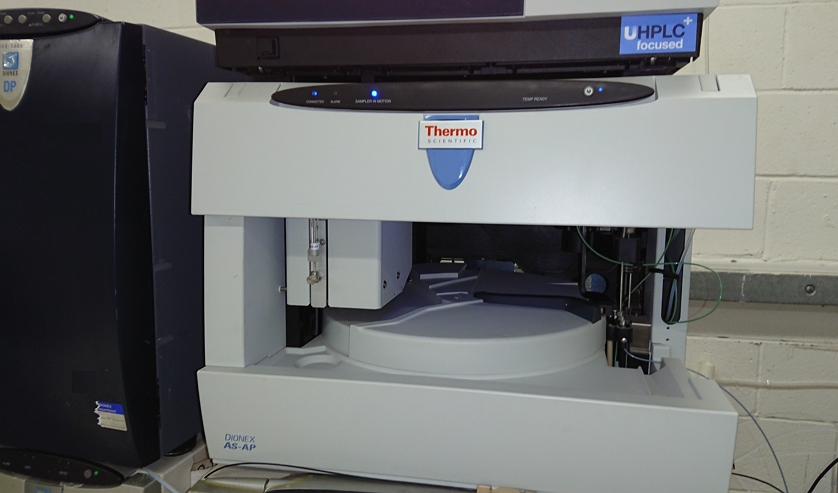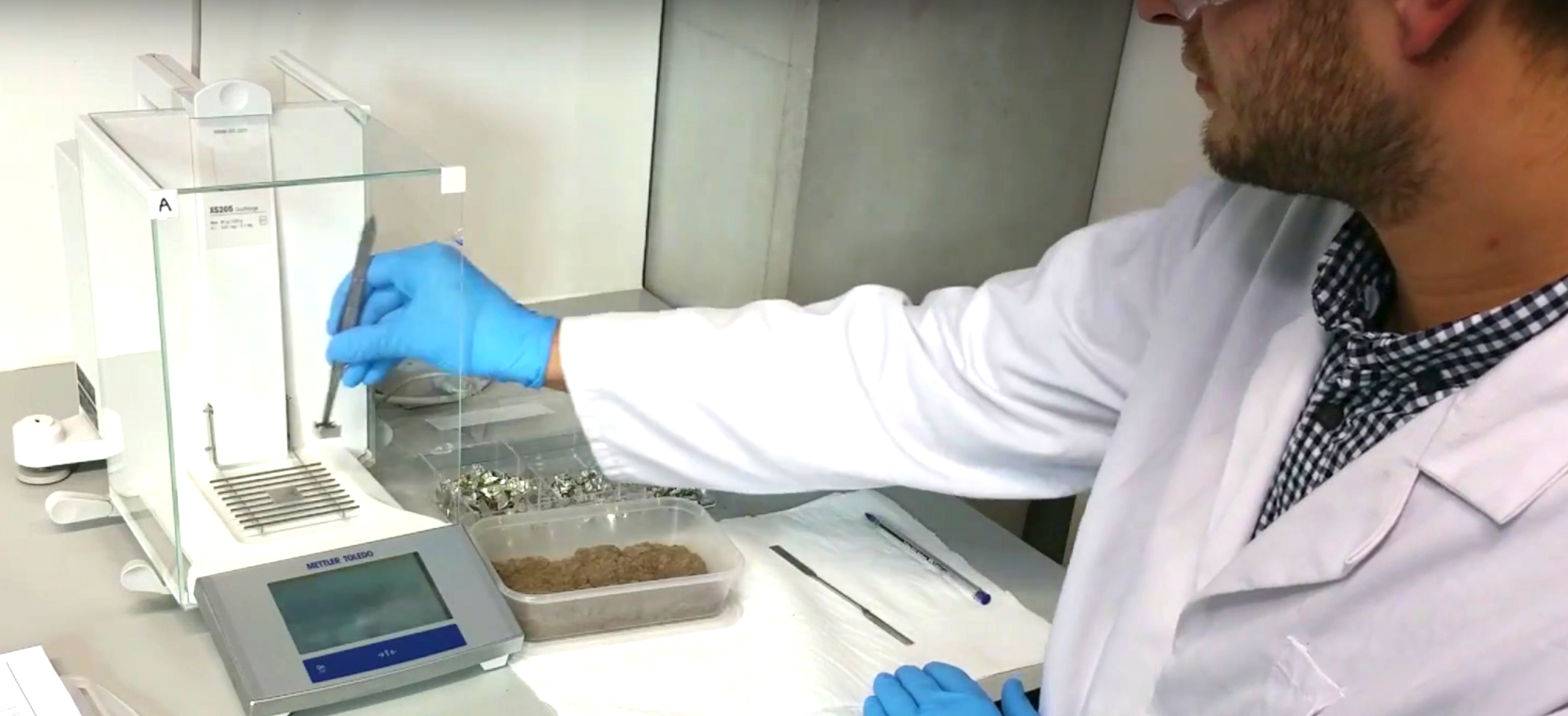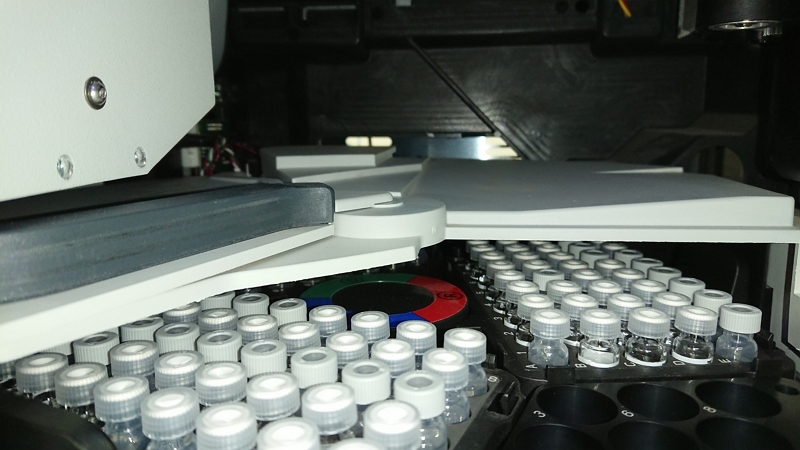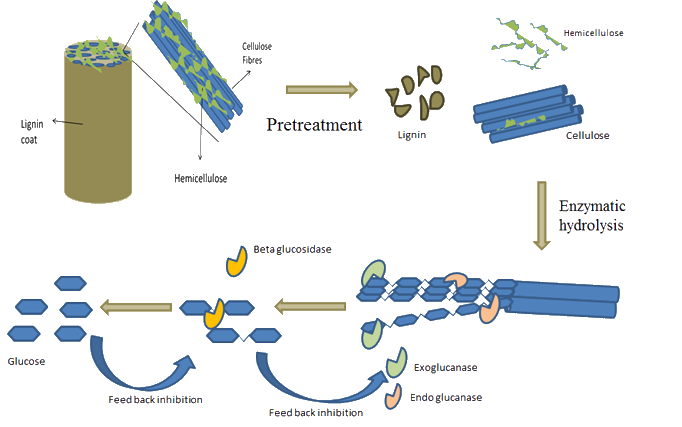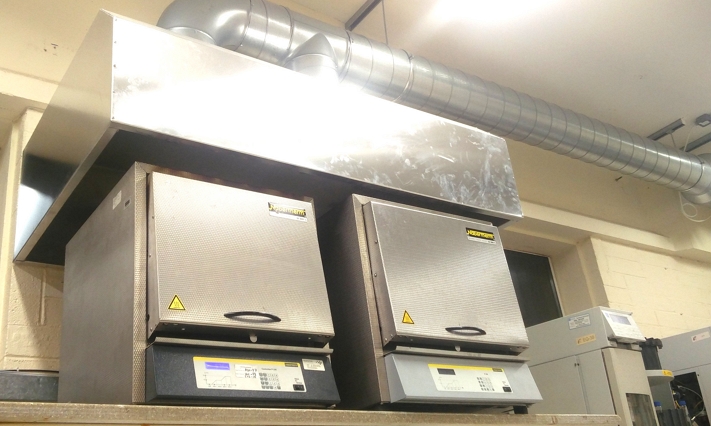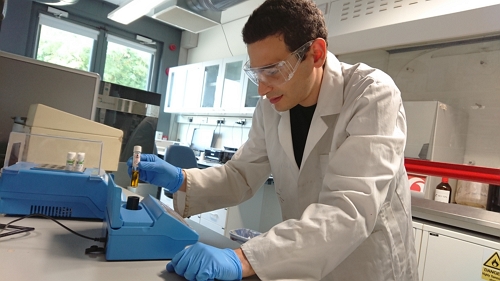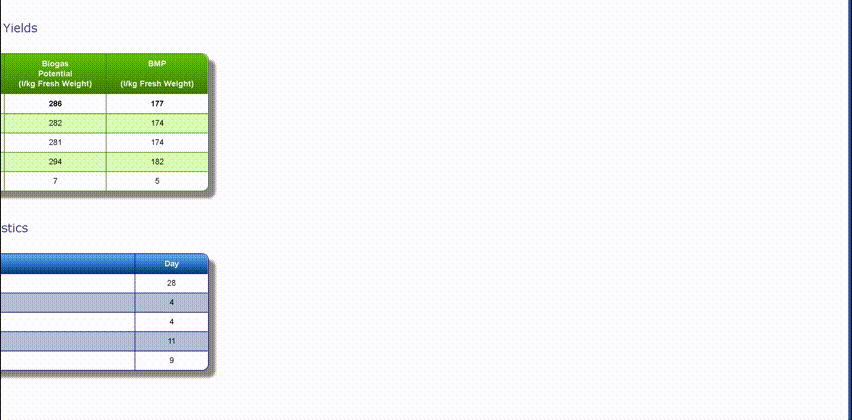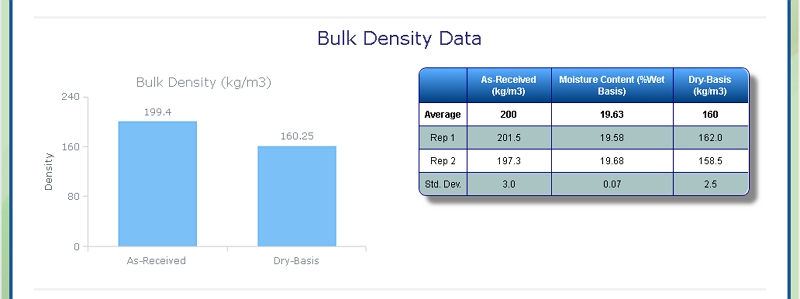Analysis of Miscanthus
Background on Miscanthus
There are numerous varieties of Miscanthus that have been grown experimentally but fewer varieties tend to be grown commercially. In Ireland, for example, Miscanthus x giganteus is the only commercial crop that has been established so far, although elsewhere in Europe, particularly in the regions that experience colder winters, M. sinensis has been grown commercially.
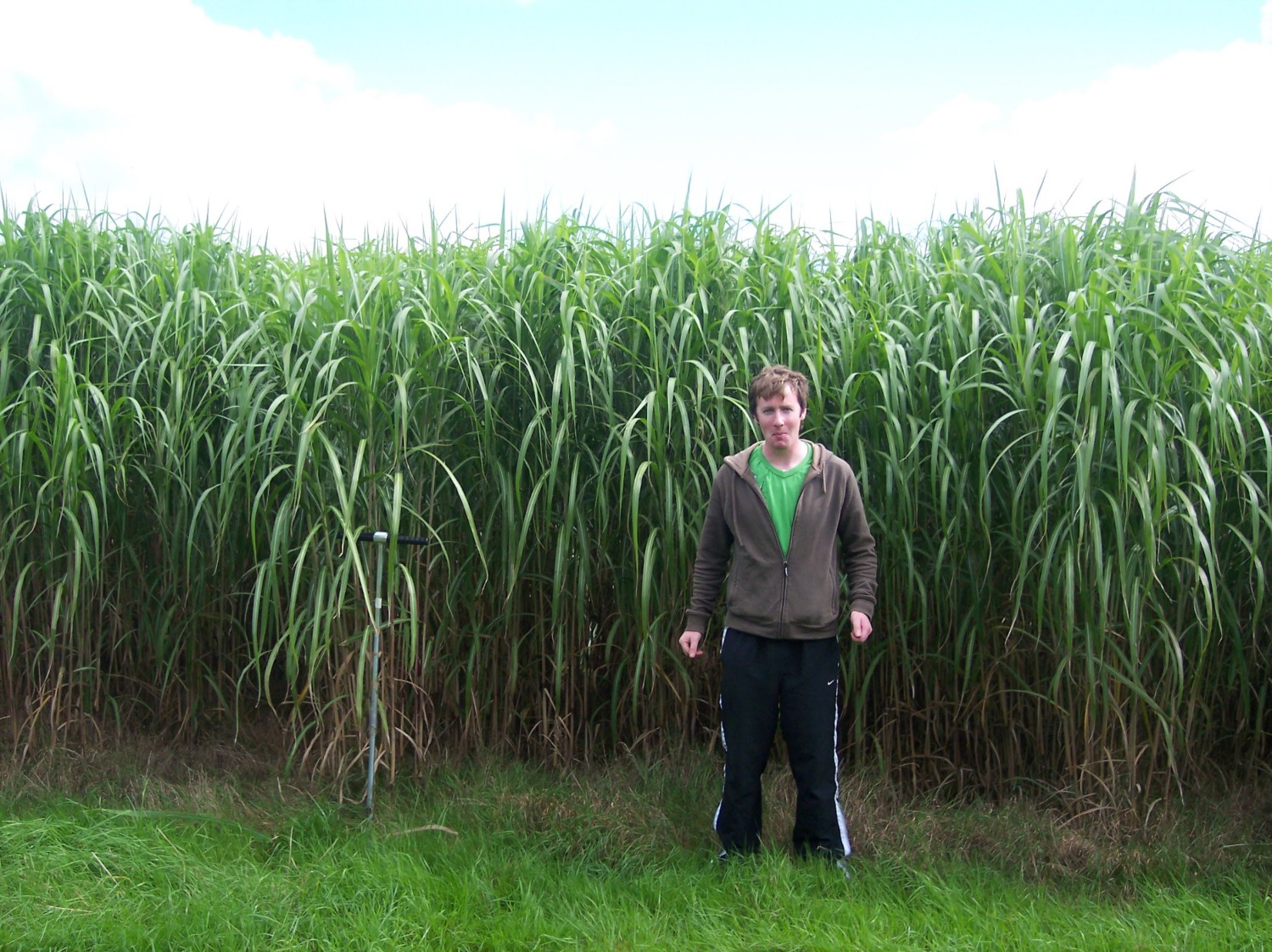
Field of Miscanthus in Western Ireland
M. x giganteus is sterile, and so must be propagated vegetatively. This can either involve the planting of rhizome cuttings or plantlets. Crop growth will start in the Spring once daytime temperatures exceed 10oC. Growth is very rapid, in May, June, and July, and results in stems that may reach a height of 3+ metres. Once the canopy closes, the lower layers of leaves begin to senesce. Shoot growth continues through August and September with full senescence occurring following the first frosts of the autumn.
During the end of the growing season, nutrients are translocated from the stems and leaves to the rhizomes for storage and utilisation in the following season. The efficient use of nutrients by Miscanthus varieties means that artificial fertilisation levels need not be high. The low fertiliser and pesticide requirements of Miscanthus mean it is a relatively environmentally friendly crop.
Harvesting of Miscanthus is carried out annually and can occur after crop senescence until just before re-growth in the following spring. It is important that the crop has senesced so that translocation of assimilates to the rhizomes has occurred. Current practices involving Miscanthus seem to be geared towards harvesting the biomass in the spring before the start of the growing season. The reasoning behind this is that the later the harvesting, the lower will be both the moisture content and the inorganic mineral content; these are important qualities in biomass combustion - the primary end use for Miscanthus at this time.
Delaying the point of harvest from the start to the end of the harvest window has been shown to result in a decrease in the amount of standing biomass harvested from the field. That is mostly attributable to the loss of leaf material from the plant.
Analysis of Miscanthus at Celignis
Celignis Analytical can determine the following properties of Miscanthus samples:
Lignocellulosic Properties of Miscanthus
Cellulose Content of Miscanthus
The study found that Miscanthus has a good cellulose content (approx. 40% on a whole plant basis) but that there was significant variability between different parts of the plant and between the different Miscanthus varieties. The cellulose content was found to be greatest in the stem sections and significantly lower in the leaf blades. Smaller plants were also found to typically have a lower cellulose content than taller plants. Due to the loss of leaves over the harvest window the cellulose content of the harvestable plant was found to increase.

A Miscanthus field late in the harvest window, when most of the leaves have shed from the plant.
Click here to see the Celignis Analysis Packages that determine Cellulose Content
Request a QuoteCellulose Content
Hemicellulose Content of Miscanthus
Click here to see the Celignis Analysis Packages that determine Hemicellulose Content
Request a QuoteHemicellulose Content
Lignin Content of Miscanthus
Click here to see the Celignis Analysis Packages that determine Lignin Content
Request a QuoteLignin Content
Starch Content of Miscanthus
Click here to see the Celignis Analysis Packages that determine Starch Content
Request a QuoteStarch Content
Uronic Acid Content of Miscanthus
Click here to see the Celignis Analysis Packages that determine Uronic Acid Content
Request a QuoteUronic Acid Content
Enzymatic Hydrolysis of Miscanthus
Click here to see the Celignis Analysis Packages that determine Enzymatic Hydrolysis
Request a QuoteEnzymatic Hydrolysis
Bioenergy Properties of Miscanthus
Ash Content of Miscanthus
Click here to see the Celignis Analysis Packages that determine Ash Content
Request a QuoteAsh Content
Heating (Calorific) Value of Miscanthus
Click here to see the Celignis Analysis Packages that determine Heating (Calorific) Value
Request a QuoteHeating (Calorific) Value
Ash Melting Behaviour of Miscanthus
Ash Shrinkage Starting Temperature (SST) - This occurs when the area of the test piece of Miscanthus ash falls below 95% of the original test piece area.
Ash Deformation Temperature (DT) - The temperature at which the first signs of rounding of the edges of the test piece occurs due to melting.
Ash Hemisphere Temperature (HT) - When the test piece of Miscanthus ash forms a hemisphere (i.e. the height becomes equal to half the base diameter).
Ash Flow Temperature (FT) - The temperature at which the Miscanthus ash is spread out over the supporting tile in a layer, the height of which is half of the test piece at the hemisphere temperature.
Click here to see the Celignis Analysis Packages that determine Ash Melting Behaviour
Request a QuoteAsh Melting Behaviour
Major and Minor Elements in Miscanthus
We can also determine the levels of 13 different minor elements (such as arsenic, copper, and zinc) that may be present in Miscanthus.
Click here to see the Celignis Analysis Packages that determine Major and Minor Elements
Request a QuoteMajor and Minor Elements
Analysis of Miscanthus for Anaerobic Digestion
Biomethane potential (BMP) of Miscanthus
However, whilst Miscanthus is typically harvested in the spring when the standing biomass is driest (an important property when using this feedstock for combustion), the crop stops growing in the autumn and can potentially be harvested then. At that point the standing biomass in the field will be greater as the majority of the leaves will still be on the plant. These leaves also contain less lignin and more water-soluble carbohydrates than the stems. Experiments have shown that the BMP for autumn-harvested Miscanthus is significantly higher than for spring-harvested Miscanthus and that, coupled with the higher harvestable biomass associated with an autumn crop, the total biomethane yield from a hectare of autumn-harvested Miscanthus can exceed that which could be obtained from a hectare of maize.
Of course, the actual biomethane produced from a Miscanthus crop will depend on the particular conditions of that stand as well as the time of harvest and other factors. For that reason we recommend that a BMP test is undertaken.
Click here to see the Celignis Analysis Packages that determine BMP
Request a QuoteBMP
Physical Properties of Miscanthus
Bulk Density of Miscanthus
At Celignis we can determine the bulk density of biomass samples, including Miscanthus, according to ISO standard 17828 (2015). This method requires the biomass to be in an appropriate form (chips or powder) for density determination.
Click here to see the Celignis Analysis Packages that determine Bulk Density
Request a QuoteBulk Density
Particle Size of Miscanthus
However, whilst Miscanthus is typically harvested in the spring when the standing biomass is driest (an important property when using this feedstock for combustion), the crop stops growing in the autumn and can potentially be harvested then. At that point the standing biomass in the field will be greater as the majority of the leaves will still be on the plant. These leaves also contain less lignin and more water-soluble carbohydrates than the stems. Experiments have shown that the BMP for autumn-harvested Miscanthus is significantly higher than for spring-harvested Miscanthus and that, coupled with the higher harvestable biomass associated with an autumn crop, the total biomethane yield from a hectare of autumn-harvested Miscanthus can exceed that which could be obtained from a hectare of maize.
Of course, the actual biomethane produced from a Miscanthus crop will depend on the particular conditions of that stand as well as the time of harvest and other factors. For that reason we recommend that a BMP test is undertaken.
Click here to see the Celignis Analysis Packages that determine Particle Size
Request a QuoteParticle Size
Miscanthus plants were sampled from several plantations in Ireland over the harvest window (October-April). These were separated into their anatomical components and the loss of leaves monitored. Three distinct phases were apparent: there was minimal loss in the "Early" (October to early December) and "Late" (March and April) phases, and rapid leaf loss in the interim period. Samples were analysed for constituents relevant to biorefining. Changes in whole-plant composition included increases in glucose and Klason lignin contents and decreases in ash and arabinose contents. These changes arose mostly from the loss of leaves, but there were some changes over time within the harvestable plant components. Although leaves yield less biofuel than stems, the added biomass provided by an early harvest (31.9-38.4%) meant that per hectare biofuel yields were significantly greater (up to 29.3%) than in a late harvest. These yields greatly exceed those from first generation feedstocks. | |
The DIBANET process chain, as a result of its patented pre-treatment stage, has significantly increased the yields of levulinic acid, formic acid, and furfural beyond what was considered to be the state of the art. By fractionating lignocellulosic biomass into its three main polymers (cellulose, hemicellulose, lignin) it has also allowed for lignin to be recovered and sold as a higher-value product. These developments have meant that the amount of acid hydrolysis residues (AHRs) that have been produced are significantly (up to 88%) less than in the Biofine process. These AHRs are required to provide process heat for DIBANET. Direct combustion is the most efficient means for doing this. If such combustion does not occur and the AHRs are instead used in other processes, e.g. pyrolysis and gasification, then more biomass will need to be purchased to fuel the core DIBANET process. The AHRs have not been proven to be superior to virgin biomass when put through these thermochemical processes. Indeed, many of the results from DIBANET Work Package 4 indicate the opposite. Hence, given that DIBANET, and the modelling of its optimal configuration, is designed on the basis of an integrated process, centred on the core element of the acid hydrolysis of biomass, then combustion is the only viable end use for the AHRs.
| ||
Miscanthus samples were scanned over the visible and near infrared wavelengths at several stages of processing (wet-chopped, air-dried, dried and ground, and dried and sieved). Models were developed to predict lignocellulosic and elemental constituents based on these spectra. The dry and sieved scans gave the most accurate models; however the wet-chopped models for glucose, xylose, and Klason lignin provided excellent accuracies with root mean square error of predictions of 1.27%, 0.54%, and 0.93%, respectively. These models can be suitable for most applications. The wet models for arabinose, Klason lignin, acid soluble lignin, ash, extractives, rhamnose, acid insoluble residue, and nitrogen tended to have lower R(2) values (0.80+) for the validation sets and the wet models for galactose, mannose, and acid insoluble ash were less accurate, only having value for rough sample screening. This research shows the potential for online analysis at biorefineries for the major lignocellulosic constituents of interest. | |
This document is the result of the evaluation of biomass feedstocks, from Europe and Latin America, that took place as part of the DIBANET project. That project is co-financed from the 7 th Framework Programme for Research and Technological Demonstration of the European Union. (Title: Enhancing international cooperation between the EU and Latin America in the field of biofuels; Grant Agreement No: 227248-2).
| |||
The processing of lignocellulosic materials in modern biorefineries will allow for the
production of transport fuels and platform chemicals that could replace petroleum-derived
products. However, there is a critical lack of relevant detailed compositional information
regarding feedstocks relevant to Ireland and Irish conditions. This research has involved the
collection, preparation, and the analysis, with a high level of precision and accuracy, of a
large number of biomass samples from the waste and agricultural sectors. Not all of the
waste materials analysed are considered suitable for biorefining; for example the total sugar
contents of spent mushroom composts are too low. However, the waste paper/cardboard
that is currently exported from Ireland has a chemical composition that could result in high
biorefinery yields and so could make a significant contribution to Ireland’s biofuel demands. | ||







